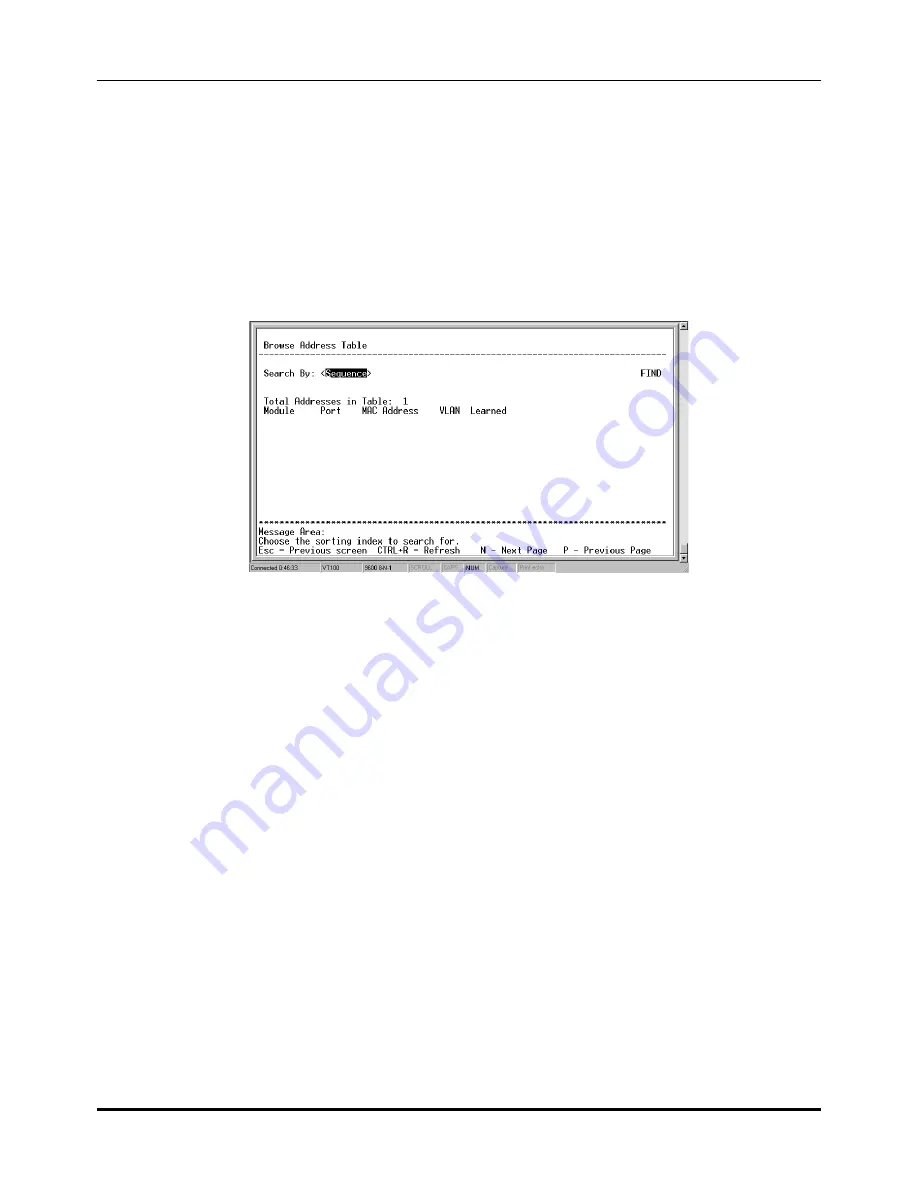
Modular Ethernet Switch User’s Guide
74
Using the Console Interface
♦
Broadcast RX/Broadcast TX
The number of good broadcast frames received and sent. This includes
dropped broadcast packets.
Browse Address Table
The
Browse Address Table
allows the user to view which Switch port(s) a specific network device uses to
communicate on the network. You can sort this table by MAC address or port. This is useful for viewing
which ports one device is using, or which devices are using one port.
To display the Browse Address Table, choose
Network Monitoring
from the main menu and then choose
Browse Address Table
. The following screen appears:
Figure 6-61. Browse Address Table
Use the space bar to select the method you wish to use to browse the address table in the Search By field. Use
<Enter> or arrow keys to navigate the screen. The FIND command initiates the search.
Search options include:
Sequence
, which allows you to browse MAC addresses by numerical sequence,
MAC
,
which searches for the MAC address specified in the MAC Address field (this is only displayed when
MAC
has
been selected in the Search By field), and
Port
, which
allows you to specify a Module and Port (these two
fields only appear when
Port
has been selected in the Search By field).
The message area at the bottom of the screen will display pertinent information regarding the function of the
highlighted screen command or tell you when no addresses can be found.
Switch History
The
Network Monitoring and Device Information
menu allows the user to view the Switch history. This
works like a trap and event receiver except it only captures trap/events generated by the Switch itself. For
example, the switch history includes when the system is rebooted, when a console session has timed-out,
when a new link is established, and when configuration is saved to flash memory.
To display the
Switch History
screen, choose
Network Monitoring
from the main menu and then choose
Switch History
. The following screen appears:






























